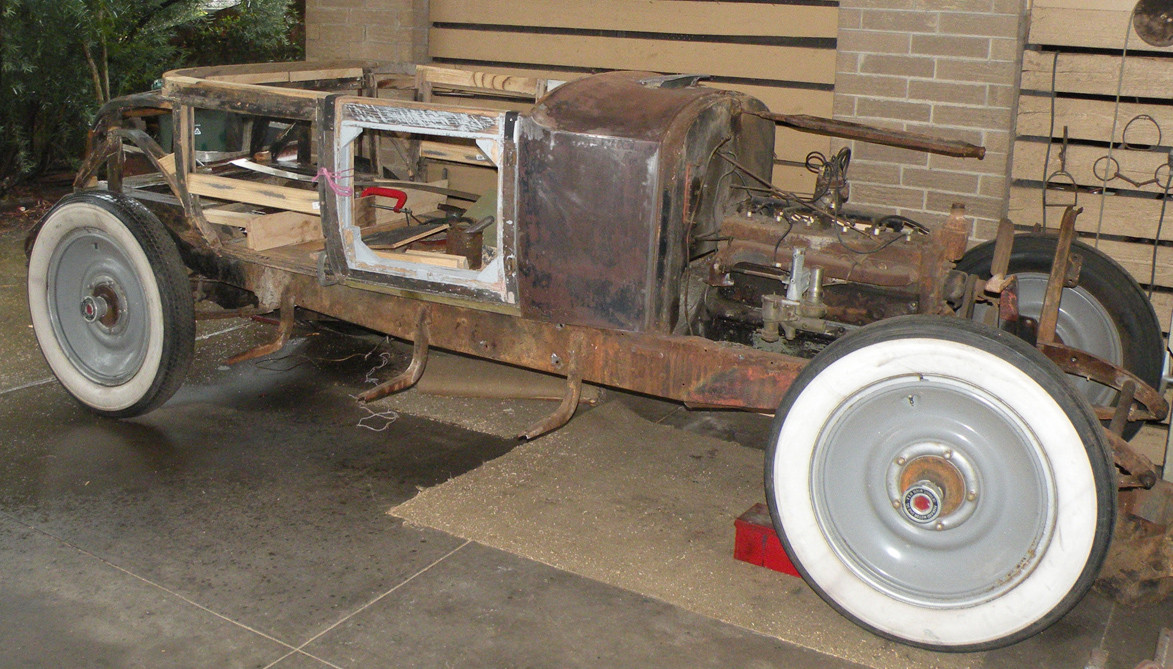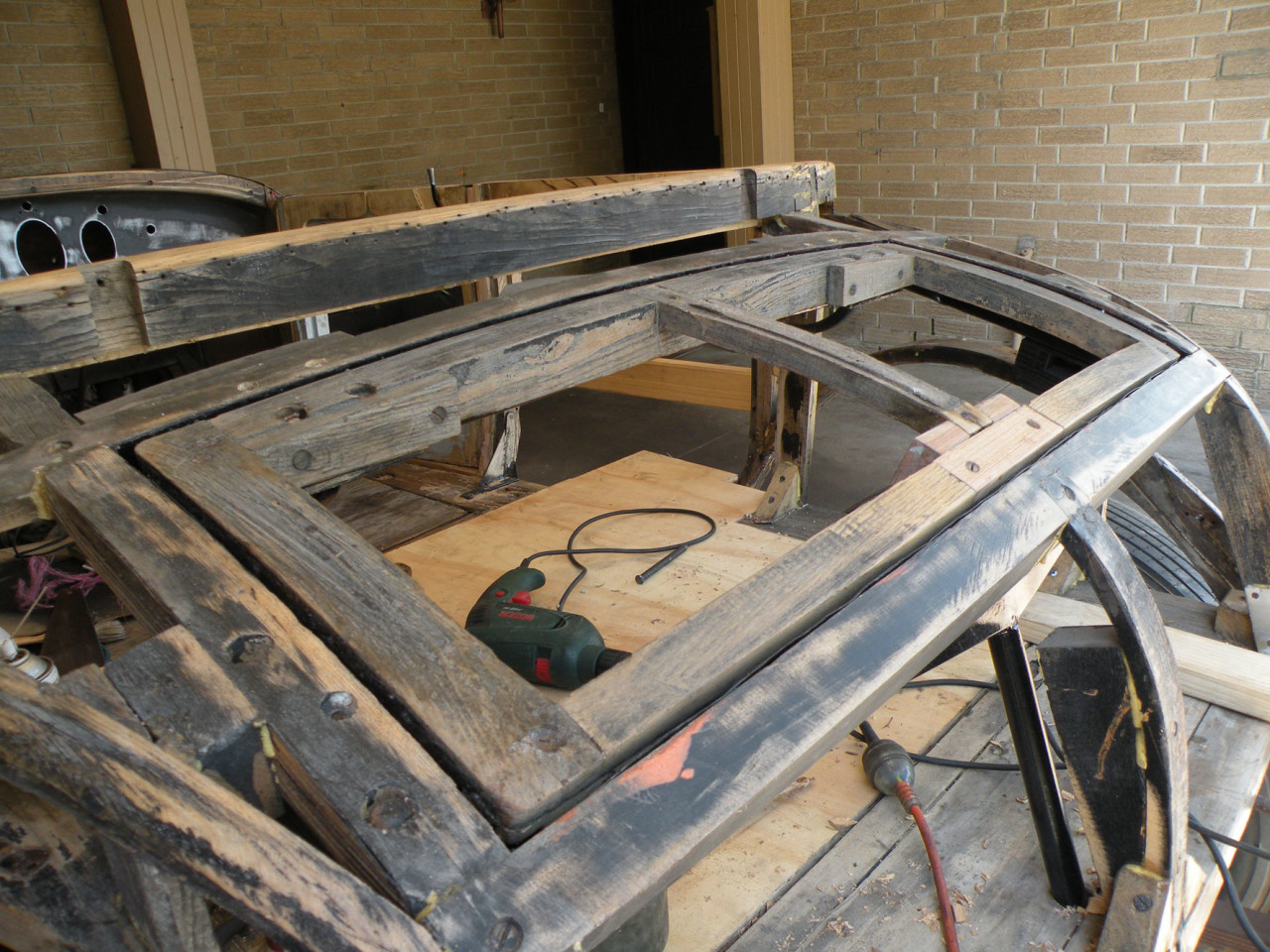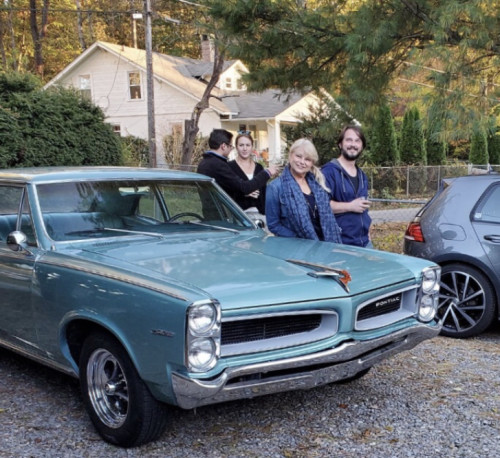You must be logged in to rate content!
11 minute(s) of a 548 minute read
4-12-2013
Attached is a copy of an e-mail sent to David Coco this afternoon. I extend the invitation to anyone to inspect the car or to challenge my sworn affidavit in an Australian Court of Law.
According to the Factory Style number stamped into the bottom rail of each door and the centre rail inside the luggage compartment lid and further on the small brass plate fixed to the floor behind the passenger seat, the body is/was Style 222. Body Number 1432.
That the car was vandalised in America before it came to Australia does not detract form the FACT that ALL the existing body on my Packard is the remaining section of the actual body fitted to the chassis before it left the factory in 1923.
I invite anybody you care to nominate to inspect the car and attempt to prove it otherwise.
Regardless what you or anyone else may wish of hypothesise, the facts remain, all the of car existing today with the exception, as previously stated, of the convertible top, windscreen and the interior trim, are indeed those that left the Packard Factory as a single unit in 1923. I am prepared to make a sworn affidavit to this effect. Are you prepared to challenge this.
Below is a photograph taken during the restoration showing rear section of the original factory timber body frame. The second photograph taken only minutes ago show a close up of the actual factory stamped numbers in the inside of the centre rib of the luggage compartment lid frame. Stamped there by a Packard factory employee in 1923. The third photograph shows the entire body frame before it was removed from the chassis frame. Would someone please point out the NON-ORIGINAL parts.



Hi Matthew
I guess what it all comes down to is that and I have made no secret of the fact I would like to sell the Packard in order to move on to my next project. I do not expect or wish to make a huge profit or even receive payment for my own input into the restoration. All I seek to do is to recover the bulk of the money that I have outlaid during the restoration. I do not think that I can be fairer than that. I keep exacting accounts of the money I spend. Note: Not the time I spend! I do this for the enjoyment and satisfaction I get from doing a job to the best of my ability. While I may be asking what appears to be a Top price I believe that my Packard can only be described as a Top car. I am really shocked and surprised at the totally negative attitude that so many of your countrymen have taken.
In effect both I and the car have been effectively excluded from the American Collector Car market.
There is no way that I am about to give the car away in order to see it re-appear on a dealers website/showroom at twice the price. I am not in a particular hurry to sell the car, as you say I can drive it and enjoy it. I just happen to be am extremely principled person and I believe in living by my principles. Regarding my Restoration Projects my PRINCIPLE is to only have one project car at a time. I cannot start my next project until the Packard (in this instance) has been "moved on". From what I an beening told, I have totally wasted my time and money as the car is Valuless
My 1934 Lagonda Rapier is the car that I have owned since 1978 because that is the car that I most enjoy driving. Very few people that I know of do more driving in their Antique Car than Helen & I do in the Lagonda. Apparently by American AACA and CCCA standards it too is a 'mongrel' but what a bite it has. It has also been known to wag its tail.
4-13-2013
Thank you Matthew.
For all those people who do not like the original (unknown) history of my car I have decided to fabricate a new history which may be possibly more acceptable to some people. The Used Car Dealers among you I am sure will approve.
You had better sit down because
1.It will take a little time to read
and
2. It is so incredible it will knock you off your feet.
By the most unlikely coincidence, I have only recently been able to discover what may well be the true history of the Packard (Convertible) Coupe Chassis Number U28317.
It now appears that virtually all my earlier assumptions may have been incorrect!
Laid down during the later half of 1923 the car was ordered by the Paris, France, Packard Concessionaires, L’Automobiles Barbezat through the Packard Motor Car Companies sales office at 102 Avenue des Champs-Elycees. The chassis was to be supplied fitted with a Style 222, 4 passenger coupe, body. This was shipped on a C.G.T. (Compagine General Transatlantique) freighter some time in October-November 1923. At this time of the year the Atlantic is known for its unpredictable weather. The ship ran into one of the worst Atlantic storms recorded during the decade and was considered lucky to have reached the port of Le Harve on the Normandy coast. During unloading it was found that some of the cargo in the forward hold had broken loose causing a considerable amount of damage. A large crate containing an industrial electric motor had shifted, breaking the heavy ropes securing it and in the process shattering the pine crate protecting the Packard. The entire weight of almost 1½ ton resting on the roof of the car. This was almost totally caved in, breaking all the window glass including the windscreen and bending the steering column down against the seat cushion! Adding to the carnage a hatch covering the hold had split open allowing sea water to flood into the hold, it was only by frantic pumping that the crew managed to keep the ship afloat.
From Le Harve the car was transported by train via Rouen to L’Automobiles Barbezrat’s Service Depot at 13 Quai de Boulogne, Boulogne-sur-Seine on the western outskirts of Paris. Once the damage was assessed by the Marine Insurance Company, the car was taken on a float (transport) via the riverside road through the Bois de Boulogne north to Neiully-sur- Seine to the Carroserie des Ansart et Teisseire. A well-known coachbuilding firm specialising in prestige automobiles. Their particular speciality being Decapotable (convertible) bodies. After much discussion between Packard (France) M, Barbezart, the Insurance Company involved and M. Teisseire the principal in charge of Coachbuilding firm, it was decided that the craftsmen at A et T should carefully remove the remains of the now irreparably damaged roof retaining all the original factory aluminium panels below the waist line. This in order to convert the still unsold car to a luxurious open two seater with a folding fabric roof. The sodden and badly stained fabric interior trim along with the original Packard factory seating was removed, the little folding front passenger seat being deemed totally unsuitable for the soon to be changed character of the car.
The old saying goes that “An ill wind blows no good” in this particular case the reverse could be said to hold true. Thanks to the artistic prowess of M. Teisserire and the skill of the tradesmen at his command not only has he indeed created a veritable "silk purse" but also to M. Barbezat’s delight, instead of a standard Packard Coupe with limited appeal, he now was soon to have on his showroom floor a highly desirable convertible coupe. To further divorce the car form its comparatively humble beginnings, and after further consultation with designer-craftsman M. Teisseire it was decided to change the colour of the car from the staid Packard navy blue to a rich chocolate brown, a colour much favoured by Parisian socialites during the early 1920s. This was to be contrasted by a top quality biscuit coloured hide for the upholstery together with the highly fashionable “Salt & Pepper” fabric for the folding roof. Suddenly the Packard Concessionaire could see that rather than sustaining a loss, that he now had the makings of a handsome profit. Not only could he include in his inventory an outstandingly beautiful convertible but one that was totally unique in the world and as such, sure to command a premium. In no time at all the car was sold to a fashionable Parisian socialite. During the ensuing years the car was to appear parked outside exclusive salons along the boulevards of Paris.
Like all good things, the extravagant lifestyle of the Parisian upper echelon was to be brought to a sudden halt by the devastating World Financial Depression of the 1930s. Unable to afford the cars prodigious thirst for petrol or to maintain it in first class order. Reluctantly the car was left with a Paris garage to be stored on blocks to await a return of better times. Unfortunately a certain German Dictator had different ideas. To avoid confiscation, at first by the French authorities desperate for scrap aluminium and then the Nazi invading forces the car was hidden behind a hastily erected wall. There it was to stay until the late 1940s when a post-war Allied Military Forces work squad, clearing bomb damaged rubble on the outskirts of Paris discovered the car, by now somewhat battered and looking decidedly worse for wear. One of their number, an Australian “Digger”, (WW1 slang for an Australian Infantryman) always on the look out for anything interesting and capable of being sold on for a profit, quickly arranged for this prize to be towed back to base.
Over the next months and years the Packard changed hands several time until one Aussie, his tour of duty over and returning home, decided to ship the car back to his home port of Melbourne. Space on cargo ships being at something of a premium it was almost eight months later that a space aboard ship could be allocated to the car. In a deal with an American Gi, four new white wall tires were discovered and fitted to the car.
The returning Australian Serviceman’s initial plan was to bring the car up to a useable standard and sell it at a nice profit to one of his car hungry friends back at home in Melbourne.
While waiting for the car to arrive by sea, he started to make inquiries about the cost and work involved to convert the Packard to right hand drive, this necessary to make it acceptable to the Australian motor registration authorities.
Very quickly all his visions of a quick and easy profit turned to dust,
After a motor engineer friend explained that there was far more required than simply changing the steering box to the other side of the car, chief among these was the problem of moving the clutch and brake actuation pedals from left to right. It did not take long for him to decide that it would be better to cut his losses. This decision was reinforced when on the cars arrival the Australian Customs announced that Duty was payable on the car at the then going rate, almost 100% of estimated value. The cars fate was sealed and it was left abandoned on the docks as “unclaimed cargo”. After the required period of time the car was seized and moved into a locked “Bonded Store”. There it remained for almost 60 years until the requirement for more much needed and valuable storage space meant, that the long forgotten car was moved out into the open. It was only after some weeks in the open that it caught the attention of a part time dockworker, who had a passing interest in old motor cars. After making some enquiries he was able to buy the car from the Stevedoring Company in whose shed the car had lay hidden for over 50 years. Another four years later I bought the car from him and its restoration started.

bravo!
Posted by CCmyVW on 1/26/20 @ 5:30:36 PM